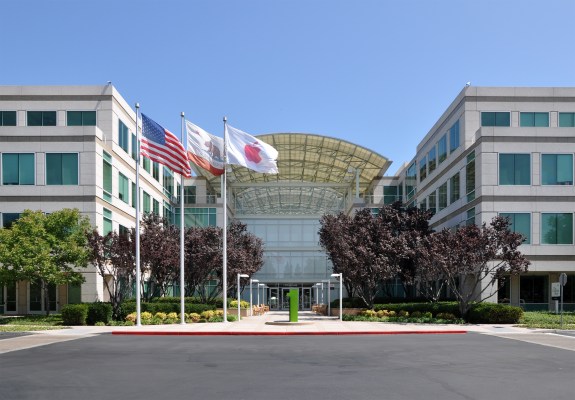Apple will build a $2 billion global command center located in Mesa, Arizona, the company revealed on Monday (via CNBC). It will employ 150 full-time personnel, and will also result in between 300 and 500 construction and trade jobs, and will play host to the company’s data operations across the globe.
Apple’s arrangement involves repurposing a facility that previously housed GT Advanced Technologies facilities, which was an Apple supply partner involved in the production of sapphire glass materials that declared bankruptcy last year. Apple had acquired the 1.3 million sq ft facility back in 2013 to lease to GTAT for its sapphire supply facilities, which were to be exclusively for Apple’s benefit. Apple’s investment includes a pledge to power the new facility completely using energy derived from renewable sources, which is in keeping with its commitment to green power, and as part of the project the company will be building out new solar collection facilities.
As part of its bankruptcy arrangement with GTAT over outstanding debt, Apple had agreed to acquire some of the failed company’s assets, and it already owned the land it had intended to lease to GTAT for expansion. Apple has increasing requirements for cloud and data management, of course, owing to the increased importance of said services to both its desktop and mobile platforms, as well as iCloud.com.
The repurposing of the Mesa, Arizona facility seems like a move inspired by negative circumstances that turns into opportunity for most of those involved – Apple gets something to do with property it already purchased, as well as a new HQ for its growing data business, while Arizona gets a renewed commitment to employment and the local Mesa economy.
Apple’s existing data centres are all running entirely on renewable energy, which includes facilities in the Bay Area and in North Carolina, and Oregon, as well as a new facility opened lat year outside of Reno, Nevada. Apple’s MO when powering new facility is to build or buy new clean energy sources that are entirely additive to the grid, and solar is its preferred tech, so the new solar facilities it aims to build are another net benefit resulting from the arrangement.
Apple plans to build enough solar power to supply around 14,500 homes, we’ve learned, which prompted Greenpeace to laud its efforts on this particular project. A statement from the organization’s Senior IT Sector Analyst Gary Cook explains the potential local impact:
Arizona has some of the best solar potential in the world – yet Arizona utilities and policy makers have been slow to tap the economic potential of solar, and some are still trying to slow the growth of solar. If the Salt River Project can work with Apple to help it power its operations with solar energy, it can surely work with the thousands of Arizona residents and businesses who want to do the same thing. Apple’s announcement today should encourage policy makers, regulators, and utilities in Arizona to tap into the state’s huge potential for solar, and turn this resource into an economic driver for growth.
In a statement provided to TechCrunch, Apple explained both the scale of the project and he environmental benefits of the upcoming facility.
We’re proud to continue investing in the U.S. with a new data center in Arizona, which will serve as a command center for our global networks. This multi-billion dollar project is one of the largest investments we’ve ever made, and when completed it will add over 600 engineering and construction jobs to the more than one million jobs Apple has already created in the U.S. Like all Apple data centers, it will be powered by 100 percent renewable energy, much of which will come from a new local solar farm.
